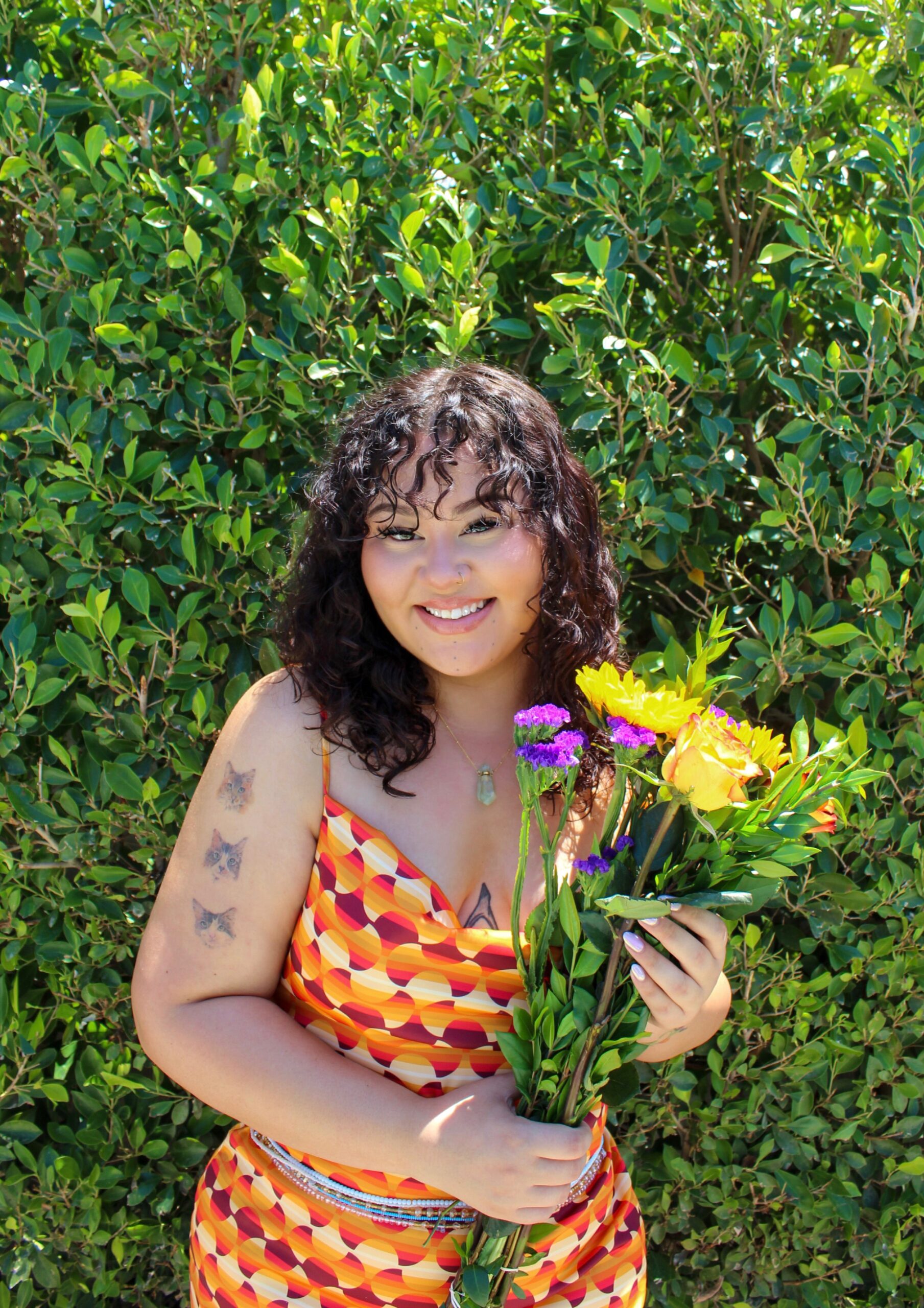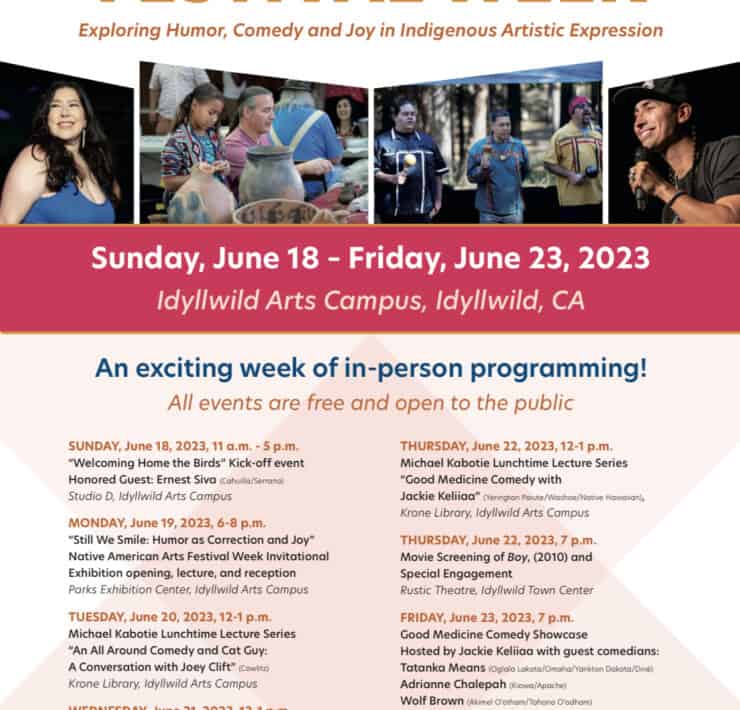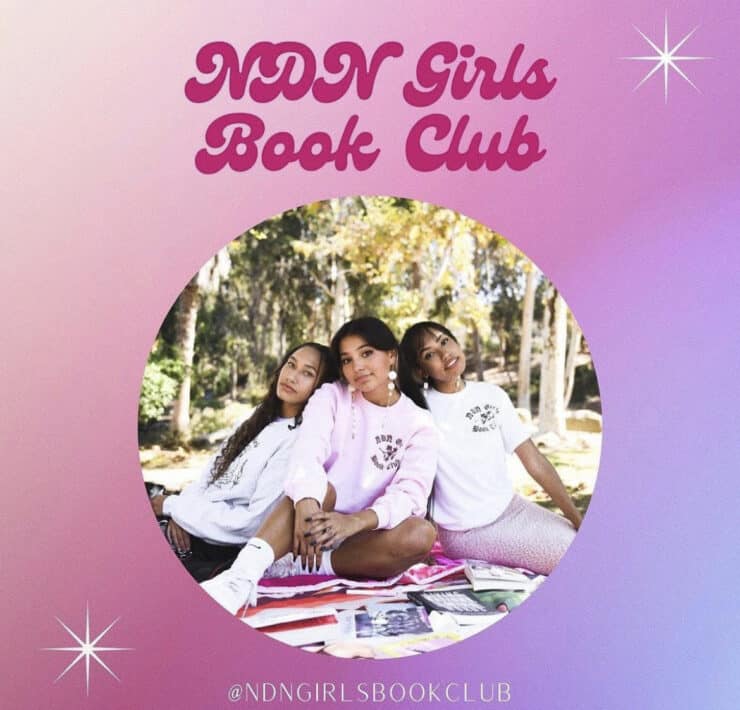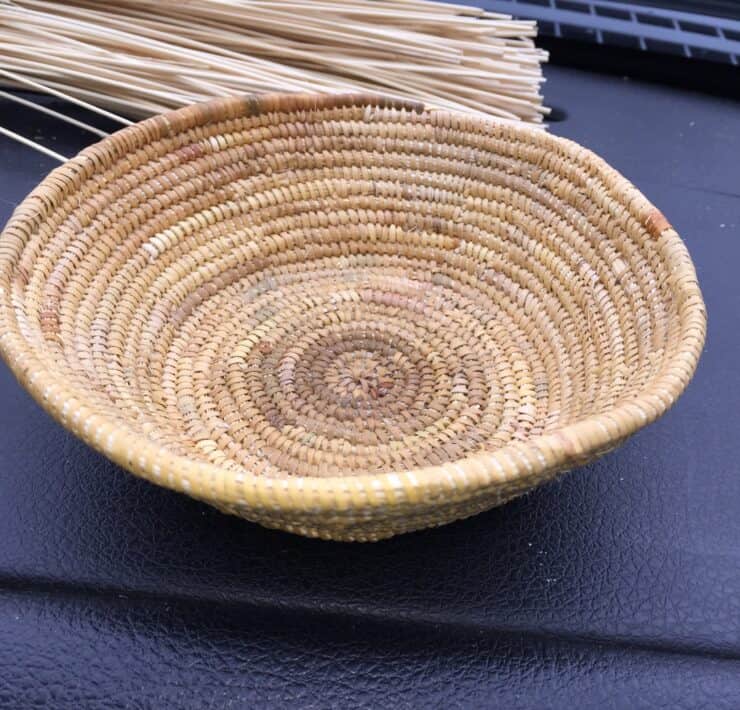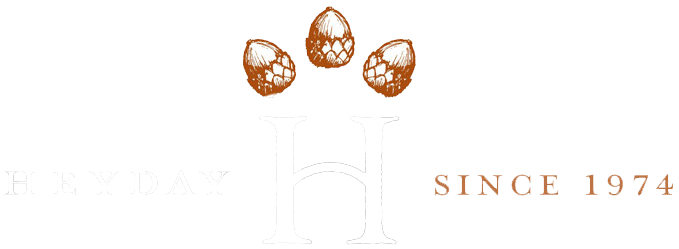
By Emily Clarke
It is the morning of Indigenous People’s Day and students, staff, and community members are gathered on the Idyllwild Arts campus ready for a day full of educational activities, honest heart-to-hearts, and fun. The programming is being presented by the Native American Arts program, which the illustrious Shaliyah Ben is the director of. The day begins with Bird Songs led by Derek Duro in order to open the event in a positive light while also briefly introducing attendees to the culture of the Indigenous people whose traditional homelands surround Idyllwild. After a few songs, Shaliyah invites us to head into the auditorium for the next presentation.
Ed Kabotie stands on stage with a guitar slung across his chest, a flute in hand, and a powerpoint lecture full of images of Indigenous art to his right. Ed, a Tewa and Hopi identifying musician, artist, and self–acclaimed history lover, begins his lecture with a song. He is a member of ‘Tha Yoties,’ a Native reggae and rock band from Flagstaff Arizona. After a short musical performance, Ed launches into his lecture on Indigenous history, using images of his father and grandfather’s art as visual components of his storytelling. Ed attempts to “fill the hole” in American history with the true Native American history many textbooks leave out. He uses humor, brutal honesty, and vulnerability to connect with the audience, and by the end of his lecture, I’m inconspicuously wiping tears from my eyes in the back row. Ed truly has a way with words, and it’s clear that the Idyllwild Arts community is open to having important conversations centered around Indigeneity no matter how uncomfortable they may be.
The next activity is a showing of the film Gather, which is a documentary following various Native chefs, gatherers, hunters, and farmers on their journey to understand and practice food sovereignty. Through this screening, the audience is able to expand their knowledge of Indigenous foodways while also facing the harsh reality that many Native communities live in food deserts and struggle with physical health and emotional wellness because of this. For many Native people, the lack of healthy, traditional food sources is just another way in which they are “living out long-term genocide.” Many of the Indigenous people who were featured in Gather talk about the healing qualities of traditional knowledge and Native foods, and the Idyllwild community gets a small taste of the power of Native food at lunch, where Native dishes such as Three Sisters soup and Frybread make an appearance along with the upbeat music of Tha Yoties.

After lunch, the community members who visited Idyllwild Arts for the purpose of celebrating Indigenous People’s Day head home and the scheduled programming now focuses primarily on the Idyllwild Arts students. Highschoolers who come from various parts of the world are able to participate in traditional cordage weaving, drum performances, Native artist lectures, and pottery-making with Tony Soares. Throughout the program, the mountain is blessed with rain, and the kids, although wet, enjoy learning from the various Native artists in the now chilly afternoon. To finish up the day, artist Erika Haarsch gives an artist talk at the Parks Exhibition Center and an opening reception is held afterwards so the community is able to experience the power of her work in a gallery space. As participants make their way around the Idyllwild Arts campus, they are also introduced to four site-specific murals painted by Cheyenne River Sioux artist Cheyenne Randall.
Although each activity and presentation was extremely valuable, as the day comes to a close, I know that Ed Kabotie’s lecture is what will stay with me the longest. Within his presentation, Ed mentioned that Indigenous history does not always draw a line in the sand between “good” and “bad” or “oppressed” and “oppressor.” There are moments within Native history, within Hopi history, in which Indigenous communities acted in violence or in a way that they are not proud of today. The difference between Native people and dominant American culture, however, is that many Indigenous communities choose to acknowledge their lessons, whereas America chooses to sweep theirs under the rug. Ed says he worries that we are doing that now; becoming desensitized to things like the COVID-19 pandemic and the death of George Floyd, and he urges the audience to consider what they might need to learn from these tragic historical events. On Indigenous People’s Day, we celebrate Indigenous communities for their contributions to the world, for the resilience and beauty of each eclectic culture, and for their long tradition of creativity. However, we also need to celebrate the Indigenous-mindset, because looking at the world through a Native eyes is far different than looking at the world through a colonized or Americanized perspective.


